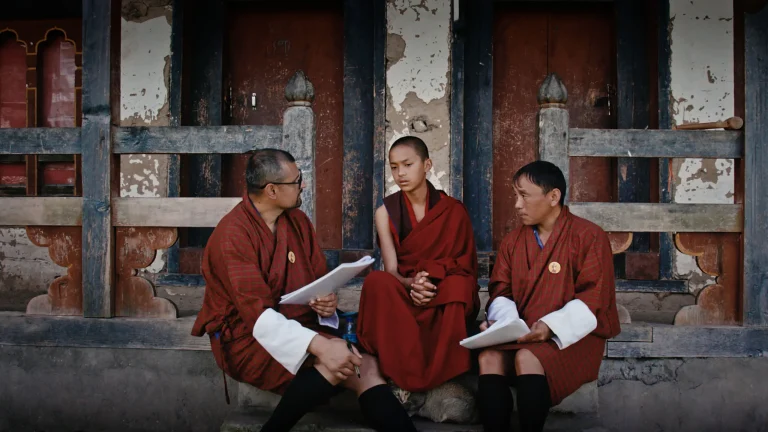50 Years of Nirmalyam (1973): Most recently, the Malayalam film industry witnessed the pan-Indian scale commercial success of Vishnu Sasi Shankar’s Malikappuram (2022). Despite not having any of the industry’s A-list actors, a huge budget, or even an ambitious plot, Malikapuram has reportedly crossed the 100 crore benchmark, a feat achieved by only a select few Malayalam films. It has become public knowledge by now that the success of the film can largely be attributed to its religious iconography, as the plot centres around the pilgrimage of two children to the holy shrine of Lord Ayyappa, Sabarimala. It is ironic that a film that hinges its success on its religious sentiments and the wider debates surrounding the alignment of Hinduism with the national identity comes 50 years after one of Indian cinema’s most scathing critiques of faith: M T Vasudevan Nair’s Nirmalyam (1973).
In a letter to Rishabh Shetty appreciating the artistic merits of Kantara (2022), Kamal Hassan referred to the many cinematic inspirations that Kantara drew from subconsciously and presented Nirmalyam as a prime example. Indeed, one observes shades of the Panjurli embodiment of the Bhoota Kola performer by Rishabh Shetty in the seeming possession of the Goddess in Velichappadu by PJ Antony. That being the case, one wonders whether a film like Nirmalyam, with its condescension of faith and climactic belittlement, would be able to evade the hounds of censorship (both legal and public) in India today. At a time when a Muslim man holding a saffron bikini-clad woman is projected as problematic, how would today’s audience take a Christian actor playing a religious oracle spitting blood at a Goddess’ totem?
Recommended: 25 Greatest Malayalam Movies of All Time
A film very much ahead of its time for its ideological subtexts on the intersections between morality, duty, and faith, unpacking Nirmalyam presents a tedious task. However, this essay seeks not to examine the role of religion or its significance in Vasudevan’s magnum opus but rather the contrary. The 1970s was a decade of great transition in Kerala. While the nation was consumed with the larger complication of the Emergency during the mid-70s, Kerala faced massive unemployment with its inability to industrialise, resulting in the mass exodus of its youth from rural to urban and later international settings, as exemplified by the mass migration to Gulf countries. This essay explores Kerala’s changing social structure during the early 70s, which paved the way for these drastic changes by analysing Nirmalyam as a historiographic, communicative, and political tool.
Winner of the 1973 National Award for Best Film, Nirmalyam’s plot centers around a village’s diminishing interest in faith and the desperate attempt of Velichappadu, the temple oracle, to bring faith back into prominence. Parallel to the central plot, the film presents narratives on the changing social structure of Kerala during the early 70s, with the growing appeal of communism, increasing transportation and mobility, depleting interest in cultural art forms, widespread poverty, and mass unemployment.
A Brief History
Until the formation of its first government, Kerala was predominantly ruled over by three princely states; Cochin, Travancore, and Malabar, all embroiled in feudalism. However, post-independence, Kerala witnessed its first democratically elected ministry under the communist leadership of EMS Namboothiripad. This was also the second-ever elected communist government in the world. Namboothiripad’s government introduced land reform and education bills, which redistributed massive acres of land from upper-class landowners (Jenmis) to the landless peasants (Kudiyanmar) and attempted to standardise private education, making it more accessible.
The increasing socialist restructuring of the state resulted in intervention from the central government under Prime Minister Jawaharlal Nehru in 1959, saturating the state government and enforcing the President’s rule. The growth of communism in Kerala and the spread of socialist ideals even caught the attention of the USA, with claims that the CIA played a role in Nehru’s intervention of 1959 [1]. However, communism continued to grow in the state and further resonated with the masses through popular plays such as Thoppil Bhasi’s Ningalenne Communistaki (1970). During the late 1960s and 1970s, Kerala was governed by the United Front, a coalition between the five political parties that skewed together ideals of communism (through the CPI) and the Indian congress party, which presented a perverted political philosophy not readily accessible by Kerala.
Reimagining Power
The ‘Kerala’ depicted in Nirmalyam reverberates the ethos of early 1900s European modernism, with morality no longer being based on religion and scientific advancement presenting a more industrialised commercial society. The increasing literacy rate due to the education bills under the communist government played a huge role in this. There was an air of alienation and pessimism in everyday interaction.
Contextualizing both the feudal history of the state with its caste and class hierarchies and prejudice and the redistribution of power via the redistribution of land, wealth, and education, Nirmalyam presents alienation as an evolutionary outcome. It stems from both the anxiety arising from an inability to comprehend the rejection of traditional faith and art forms and confusion in anchoring the individual’s role in the growing industrial state. For example, there are those like the village landlord, addressed as Valiyathamburan, who is irked at having lost his land and revenue due to land reform bills under the communist government.
However, he recognises industrialised enterprises as the future and reinvests in the motor vehicle business concerning buses and tyres. Additionally, he guides foreign tourists. Another example would be the former priest of the temple who resigned, stating the lack of devotees. He argues he would earn more if he went into agriculture or masonry than stick to reciting hymns. While these seem like working-class professions, he ends up opening a tea shack, seemingly becoming a petit bourgeois shop owner.
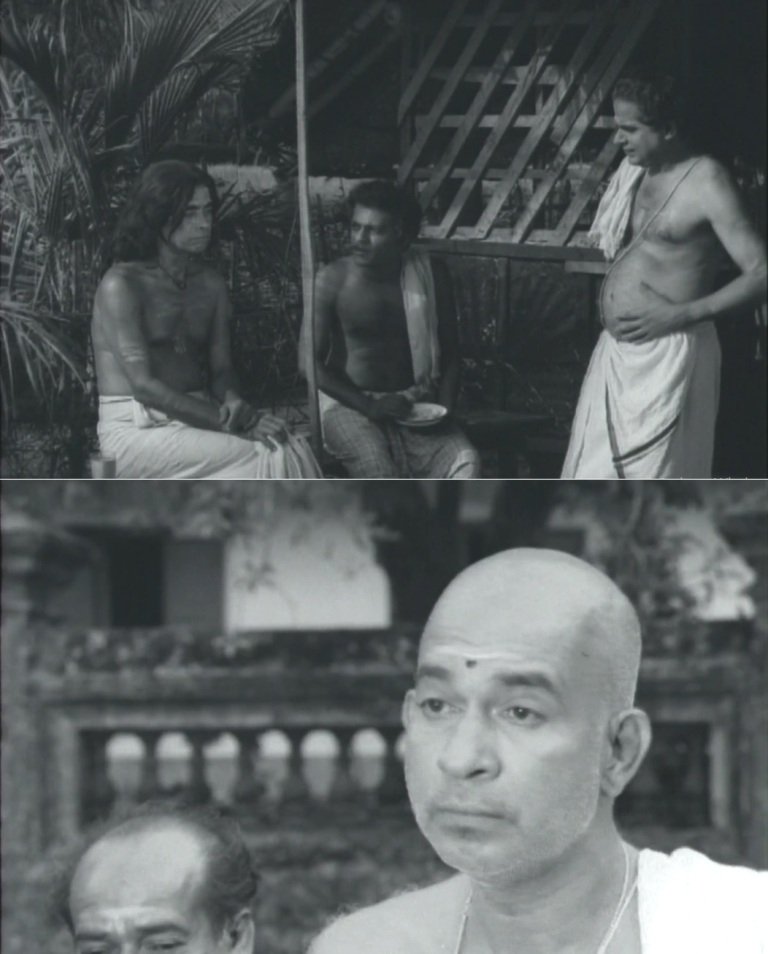
While transitioning into new wealth-creation industries, these privileged few retain their traditional titles and upper-caste etiquette. Despite arguing against Velichappadu that he gains nothing from assisting the temple, Valiyathamburan donates 101 Rs (a respectable sum in 1970s India) and an elephant for the temple festival, thereby maintaining a connection with the institute of religion and preserving his upper-class aristocracy. Despite his relatively low income from the tea shack, the former priest upholds his superiority through his caste by practicing untouchability.
Being a Brahmin, he refuses to serve his customers directly, fearing ‘contracting impurity through touch’ and therefore places their food beside them. Both Valiyathamburan and the former priest dip their toes in the regressive traditions of yesteryears to maintain their social standing while simultaneously transitioning into modern wealth-creation ventures. Their systemically privileged social standing as upper-caste inhabitants facilitates this transition without resistance.
Mobility & Migration
For the younger generation, like Velichappadu’s son, Appu, or the new priest, Branhmadattan Namboothiri, Kerala’s new modernity that emphasises individual merit over personal identity presents challenging ordeals. Unlike Velichappadu, who recurrently relies on alms from others and donations to the temple to feed his family, Appu seeks to be employed in more streamlined jobs beyond the contours of faith like his father. However, owing to a lack of employment opportunities, he is forced to migrate beyond the limited scope of his village. Similar is the case with Brahmadattan, who, despite being highly educated, is unable to keep up with the public service exams, which have seemingly high qualification criteria with limited availabilities, which may again owe to low employment opportunities.
Both Appu and Brahmadattan represent the anxiety of early 70s Kerala youth who, despite being educated to a minimum extent (Appu was educated till 10th grade and Brahamadattan, beyond), are unable to find employment. This may be quantified by Kerala’s inability to completely modernise from an agrarian economy to an industrialised one (something which many critics blame communism for). Both Appu and Brahmaddatan belong to families that overtly rely on faith and its preaching for daily sustenance. As literacy rates gradually increased owing to education reforms passed under the communist governments, people too distanced themselves from faith and religion and focused more on developing themselves as resources.
For Appu, “God sometimes presents itself in the form of tea, a cigarette, the food his friends give him.” While this statement shows a more nuanced understanding of God, he still reiterates that he expects God’s ultimate presentation in the appearance of a job. Both Appu and Brahmaddatan, while recognising this transition, were caught in between the fast-growing social changes and anchors that held them back to tradition; for Appu, his father’s vehement obsession that he submit himself to the Goddess, and for Brahmaddatan, his occupation as a priest. Should tradition remain at the risk of negating adaptation and growth, or should one modernise and take advantage of industrialisation?
This effectively resulted in faith and religion no longer being the cornerstones dictating morality but humans themselves. It presented a move away from communal ideologies that weighed the greater good of society to more selfish desires taking over. Appu is unable to provide for his family and gambles away his days. Brahmadattan forces himself onto Ammini, Velichappad’s daughter, to quench his sexual frustration. Village inhabitants such as Warrier’s wife, Lakshmikutty, or the Valiyathamburan are hesitant to share their resources with others.
Ultimately, the inability to change with the flow of time, coupled with a lack of resources, resulted in the mass migration of youth for jobs from rural areas to urban areas. Nirmalyam foregrounds this through the examples of Appu and Brahmaddatan, who migrate away from the village. Another example is Warrier’s son, who does not come home because the roads to the Warrier’s house are uneven and, therefore, difficult to travel. The uneven road symbolises the Warrier’s son’s resistance in returning to his traditional parental household, which was built on the backs of upper-caste feudalism, in his ‘modern’ car, the advent of science. His defiance in returning also presents the new generation’s sensibility of staying in urban spaces, which present more opportunities for commercial success.
Warrier’s son owning a motor vehicle also foregrounds and juxtaposes the transition of a generation that champions modern means of transportation that ease mobility, as opposed to a Warrier who walks in the night with a lamp. Vasudevan Nair uses wide-frame shots of rural landscapes but with limited bodies to show the emptiness of rural spaces due to mass migration. Contrastingly, there are more bodies shown in the post office (a developing hub for communication through traveling bodies) than in the temple, which is stationary (physically and ideologically). Bodies are constantly on the move for better class mobilisation and, thereby, a more materialistic existence beyond the spiritual one of religion and faith.
Recommended: Mukundan Unni Associates (2022) – A Metamodern (?) Replica of The Tragedy of Macbeth
Human & Faith
Even as the plot centres around themes concerning the adulation and loss of faith, Nirmalyam is less of a criticism of faith itself and more of the people who practice it. The earlier discussion on the move away from faith and emphasis on man forms part of this argument. The opening credits play looped takes off the floor drawing of the Melekaav temple Goddess. It sets the film’s religious subtext and is followed by the main conflict; the diminishing prominence of faith.
While multiple characters present nuanced case studies on human’s relationship with faith, Velichappad is the most important. Contrary to Valiyathamburan, Appu, the former priest, and Brahmadattan, who gradually distance themselves from faith, Velichappad (Translated as Light) remains an organic artefact of the state’s feudal past, blinded by faith, believing that worshipping the Goddess is the path to salvation. He sees himself as the protector of the village, the chosen one, who, under the goddess’s guidance, can bring fortune. Despite witnessing the villager’s depleting interest in faith, he refuses to accept it as absolute.
He sacrifices his familial savings for the temple, constantly preaches Appu to think of the Goddess to get a job, and prioritises favours for the temple from Valiyathamburan over alms for his family. He stubbornly believes in a higher power to provide for him despite the lack of actual productive effort on his part. When he sets out seeking alms, he is identified as a beggar and met with condescendence. However, when smallpox spreads through the land, he is the first to claim it is the Goddess’s wrath. We witness a redemption arc with him organising funds to conduct the temple festivals and web together people through faith, claiming the festival would cure smallpox and relieve them of the curse.
People project their personal truths as absolute, like Velichappad presenting himself as the medium for the Goddess. Velichappadu is committed to his occupation but ultimately feels ‘betrayed’ when losing everything in the end; Appu leaves the family, he is in debt and poor, and his wife sells her body. He is emasculated as he is unable to provide for his family and is reduced to an observer of action rather than an enforcer.
Pent-up frustration and helplessness explode into a fit of rage, ultimately spitting blood on the very Goddess’ totem that is seemingly ‘possessing’ him, effectively disowning faith before ultimately dying. Can the ‘possession’ then be read as a gimmick? If he were to do this act without being ‘possessed,’ would he not be ostracised, and therefore, did he feign possession, as he may have well done before, to spit at the idol? Thereby the film seems to not mock faith but the people who claim to be the agents of it.
Sexuality & Space
Much of the conflict, and resulting meaning, created in Nirmalyam comes from the juxtaposition between lack and excess. Valiyathamburan and Warrier own huge houses and amass wealth, whereas Velichappad and his family barely get by each day. As mentioned before, the village has wide plain fields but very limited human bodies occupying it. Similarly, there is a lack and excess of sexual desires amongst characters such as Brahmadattan and Velichappada. This also results in an interesting yet controversial reimagining of meaning allocated to the act of sex with its intersection with the space.
As mentioned before, Velichappad is emasculated because of his inability to provide for his family. He is old, uninterested in worldly pleasures, and completely committed to the Goddess. We have repeated references to the money-lender being at Velichappad’s house during his absence, foreshadowing the presence of the ‘other’ in a space mostly occupied by women (Narayani and three daughters). Brahmadattan, contrary to Velichappad, is educated, young, sexually driven, ambitious, and therefore a desirable partner.
He is vocal in his opinions and rebukes Ammini for addressing him as Adiyan (Master). He is bold enough to state that he doesn’t sleep alone at the temple and that the Goddess keeps him company. Brimming with the potential of youth yet celibate due to his profession, Brahmadattan’s sexual drive is first made visible yet suppressed in the scene where he is nervous around Warrier’s wife, Lakshmikutty. However, his sexual desire comes to the forefront with Velichappad’s daughter, Amminni.
The first time Brahmadattan and Ammini get physically intimate is in the public, yet private, space of a cave. Both are wet and sweaty from running in the rain, symbolising foreplay. The cave could be symbolic of Ammini’s genitalia, and therefore, as Brahmadattan enters it, their sexual bond is officiated. The next scene shows Unni studying under a pole. The transition from this scene to the next scene is an upwards tilting shot of the pole (which may be a phallic symbol) to the roof of the temple, transitioning to Amminni on a bed, seemingly pleasuring herself, with classical music playing in the background and visual intercuts with intimate drawing on temple walls. Thereby the temple architecture becomes the point of unison.
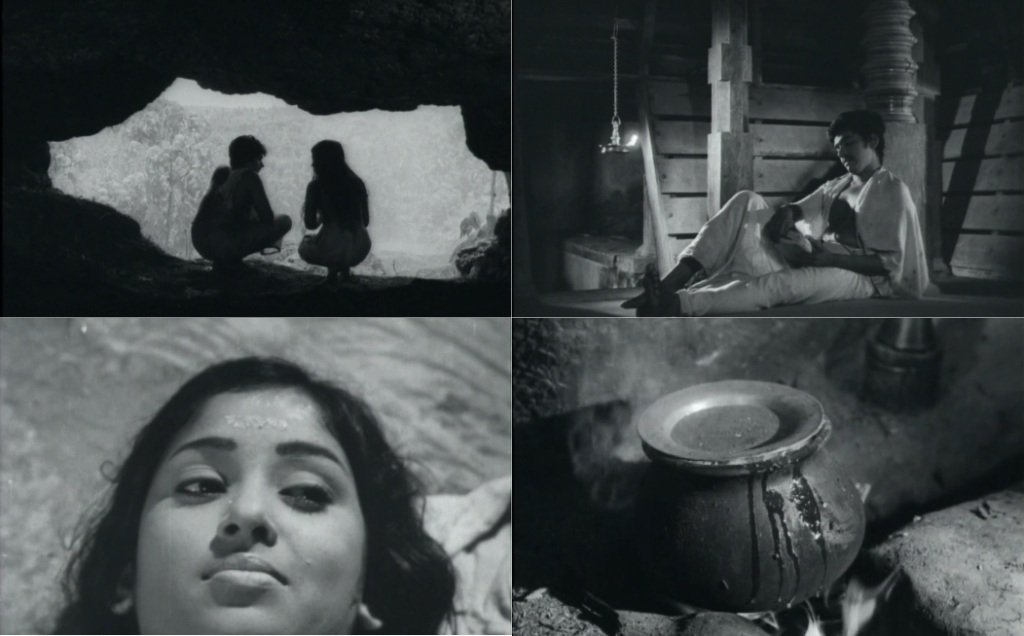
The temple becomes a recurring token in their sexual exploration, as the next time they have sex is within the temple itself. The short sequence hinting at intercourse rapidly cuts to a rice pot overflowing with white form and steam, symbolising ejaculation. Away from the public eyes of open spaces or the private eye of the household, the couple engages in coitus on sacred grounds laid with sculptures and carvings depicting nudity and intimacy. This scene both subverts the general affirmation of privatising sex and reaffirms sex as natural and, in fact, part of spirituality and faith.
However, one cannot but feel discomforted at the director’s problematic (mis)understanding of consent, as in many scenes, Brahmadattan forces himself onto Ammini even as she resists and repeatedly says no. While this helps better convey Brahmadattan’s sexual suppression and resulting drive, Amminni is presented to be passive despite being forced against her will, which presents a problematic depiction of consent or lack thereof.
Intercutting Memory & Dreams
Nirmalyam speaks less and shows more. While exposition is indeed inevitable in a plot-driven film, Nirmalyam uses juxtaposition editing through fade-outs and intercuts to weave poignant meaning from motion pictures rather than dialogue. The film intercuts scenes that personify the thoughts of its characters. These are in the forms of dreams, visions, fantasies, and memory. By depicting the reminiscences of the temple festivals, ethnic culture, and feudal history through memories of multiple characters, Nirmalyam contrasts the ‘lack’ in the present with the ‘excess’ of the past.
Velichappad regularly envisions fireworks, elephants, trumpets, drums, dance, and huge masses of people at the temple and mostly during festivals. The montages of these visions are quick-paced, with a crescendoing drumming conveying a concrete sense of celebration and spirituality. Similarly, Warrier, who too was a prominent landlord with multiple labourers under him, visualises sacks of grains and rice being brought by workers, him walking through them, hands on hip, chin up, condescension on his face, with a tight authority on his possession.
Ramunni Nair, the local Kathakali [2] artist, too, is a relic of the feudal past that once celebrated traditional art forms. He comments, “People no longer care about temples or Kathakali. Bus service, rubber, and the price of tires is what they discuss. We have little art left, but even that is for foreign tourists”. With the increasing industrialisation that the film hints at, art forms such as Kathakali became less desirable as they were not profitable. The increasing defunding of the arts led to it being made exclusive and thereby privatised. Upon requesting Valiyathamburan’s money for polishing the Kathakali adornments, Ramunni is relieved of his duties because Veliyathamburan claims the art form is dead. He has a short vision of the hay days when he was a reputed artist before crumbling down, accepting the reality of art slowly dying.
Conclusion: The Significance of Nirmalyam today
This essay has presented a case study on one of the most important films in the history of India by demarcating how its central events provide a historiographic mapping of changing communal ideologies and beliefs. While Nirmalyam predicts the gradual disowning of faith in Kerala (with its agent Velichappad ultimately despising the Goddess), the reality of today is far from it. I come back to the introduction to clarify this point. Unlike Nirmalyam, which presents humane conflicts on religion, faith, sexuality, migration, and privilege through nuanced negotiations, some of the box-office successes today are those that present a unilateral and unapologetic adulation of religion, devoid of cross-examination.
While such films have always been present at the national level (although more recently, it has become more common and politically charged), a state like Kerala, with its communist ethos that heavily relies on atheism and championing of man over myth, celebrates Malikappuram, a film on pilgrimage with humanised depictions of God Ayappa, presents a perplexing situation. M. T. Vasudevan Nair may have never predicted this to be the case in Kerala. In today’s intolerance-heavy atmosphere, where one may be imprisoned or subject to public hatred and outrage if they were to show a sex scene within a temple or someone spitting at a sacred totem, one wonders what are the new boundaries of artistic expression and social criticism.
Also Read: Analysing the ‘New’ in Malayalam’s New-Generation Buddy Movies: Rani Padmini (2015) and Super Sharanya (2022)
Notes:
- Radhakrishnan, M. G. (2021). “EMS, CIA and the Spymaster”. Mathrubhumi. https://english.mathrubhumi.com/columns/view-from-my-window/m-g-radhakrishnan-column-1.6091793
- Translated as ‘Story-Play’, it is a regional dance form of Kerala emphasising on storytelling through facial expression and dance.

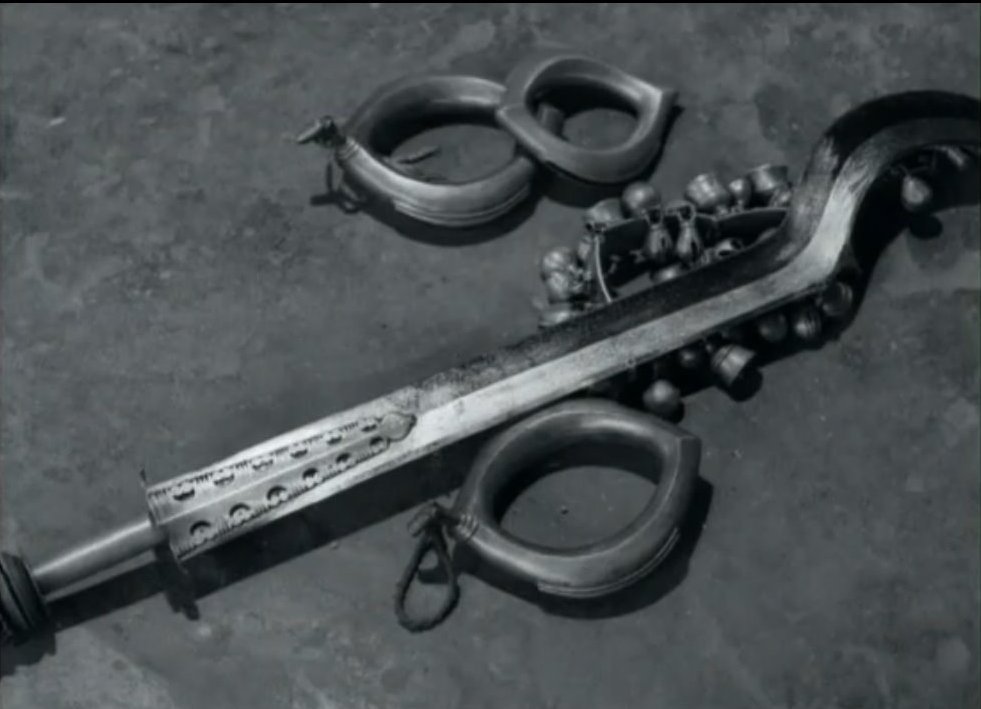


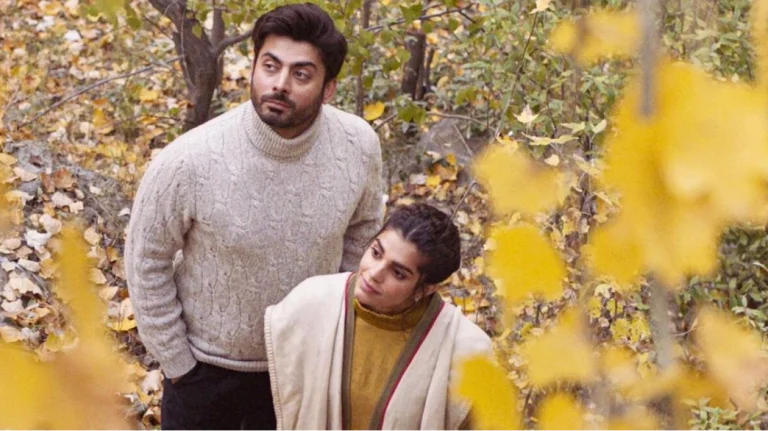

![Husbands [1970] Review: Imperfect Sincerity, or simply, Sincerity](https://79468c92.delivery.rocketcdn.me/wp-content/uploads/2020/05/Husbands-1970-768x432.jpg)
